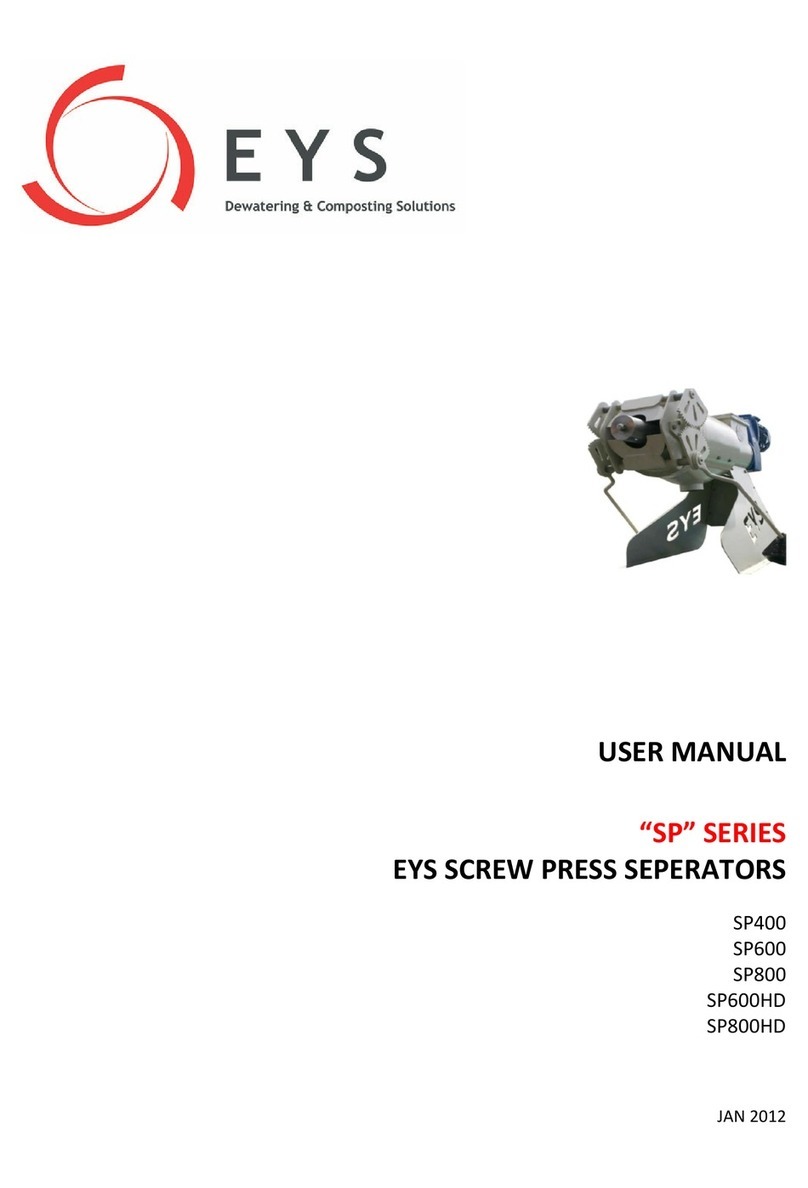procedure. After about five repetitions –depending on the slurry properties –a plug of solid matter will build up,
pushing the cover away from the mouthpiece.
As an alternative you may make a plug by hand: take some fibrous material like paper waste or dry separated
solid manure and stuff it firmly behind the flaps. Then start the pump without further interruption.
Depending on the solid matter content of the untreated slurry, the plug may already have the right consistency
with the first setting of the weight-loaded levers or it may be too wet or too dry.
Before switching the pump to continuous operation after building up the plug and performing an output of about
20cm of solid matter, you may have to re-adjust the basic settings. Otherwise the plug may shoot if it is too wet,
or it may stall the separator if it is too dry.
5.1.2 Settings for stabilizing the plug
Plug is too dry
Push the weights of the levers front or even remove them completely.
If the plug is too dry, it may stall the separator because it cannot be pushed
any more out of the mouthpiece.
For an easier discharge of the plug from the mouthpiece, push the weights
front symmetrically.
Plug is too wet
If the plug is too wet, it may shoot, which means that the plug is going to
melt and untreated slurry will escape.
To stabilize the plug, move the weights back symmetrically. If this does not
help, mount one more weight.
Depending on the slurry consistency, the above mentioned settings may need to be repeated several times at the
start-up of the separator until stable conditions have been reached. These steps are essential in achieving the
optimum separator performance.
5.2 Further instructions for trouble-free operation
Pay attention that the overflow (by-pass) line does not act as a siphon. Otherwise, due to the unfavorable flow
conditions insufficient amount of solid matter could enter the separator, which would reduce the throughput on the
one hand, while disturbing the self-cleaning mechanism of the screen by the solids on the other.




























